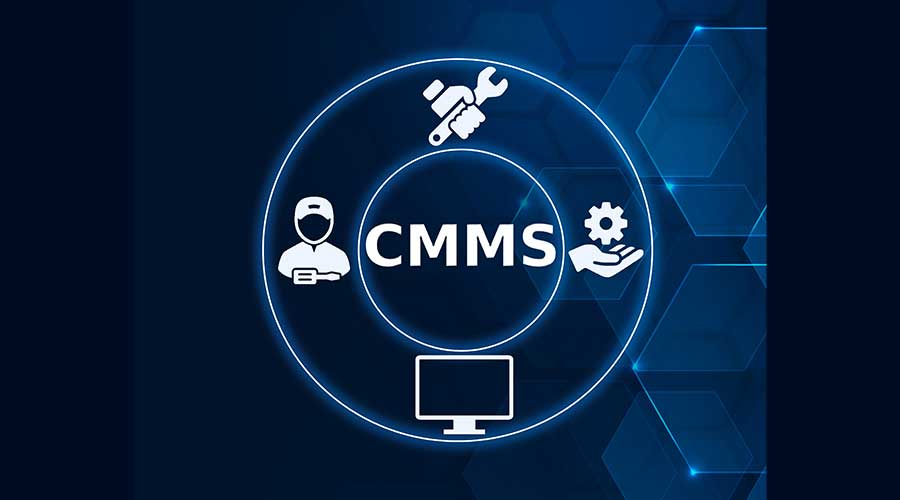BIM: who, what, how and why
Building information modeling is starting to deliver on its promises of saving time and money
By Jorge Carmona and Kathleen Irwin
BIM — building information modeling — is a yet another acronym in an industry full of three- and four-letter words. The term might be new, but with the potential to improve efficiencies throughsout the life-cycle of a building, it could quickly become an important new tool for facility executives.
So why aren’t more facility executives using BIM? As a new technology, most BIM applications are currently being used during the design and construction phases of the building process, with little implementation post-occupancy. However, a completed BIM model offers far more as a long-range tool to enhance a building’s performance and manage operations more efficiently throughout a building’s life.
Defining BIM
“There are currently almost as many definitions for BIM as there are people implementing them,” according to the National BIM Standards Committee (NBIMS), which defines building information modeling as “a digital representation of physical and functional characteristics of a facility. A BIM is a shared knowledge resource for information about a facility, forming a reliable basis for decisions during its life cycle, existing from earliest conception to demolition.”
Given this definition, BIM is clearly intended to be used as a tool for facility executives, though there are few post-occupancy applications currently in practice.
Though many facility executives use BIM synonymously with CAD (computer-aided design), true BIM encompasses more than a 3D computer-rendered model of the building. In addition to architectural information, the complete BIM contains all of the building’s information, from wall systems, structural systems, HVAC equipment, plumbing fixtures, door and window schedules, and finishes, right down to the manufacturer, supplier, and square footage of every material specified on the project.
While the challenges of introducing a new process to the slow-changing real estate industry are clear, so are the potential benefits. Cost savings, one of the greatest benefits of using a BIM, accrues to the owner. The majority of the life-cycle cost of a building does not come from the design and construction phase, but from operating the building over 20 to 50 years. In fact, federal studies have shown that operations and maintenance account for between 60 and 85 percent of total costs of ownership.
The Benefit of BIM
In 2004, the National Institute of Standards and Technology (NIST), commissioned a study to identify and estimate the efficiency losses in the U.S. capital facilities industry from inadequate interoperability among CAD, engineering, and software systems. The study defined the capital facilities industry as encompassing the design, construction, and maintenance of large commercial, institutional, and industrial buildings, facilities, and plants. Based on interviews and survey responses, the study quantified approximately $15.8 billion in annual costs of inadequate interoperability in the U.S. capital facilities industry in 2002. Of these costs, two-thirds are borne by owners and operators, who incur them predominantly during ongoing facility operation and maintenance. Examples of inefficiencies resulting from inadequate interoperability include manual re-entry of data, duplication of business functions, and the continued reliance on paper-based information management systems.
BIM can be used as a database throughout the life of the building. It can generate as-built floor plans and elevations for tenant test fits and build-outs. It can recall the paint color of the accent wall in the executive conference room on the 11th floor, for example. Further, it can calculate the square footage of that same accent wall when a new executive comes on board and wants to change its color, so maintenance crews know how much paint is required.
By contrast, typically when a tenant wants to build out a space, the facility executive works from, or perhaps has to track down from the architect, a set of as-built drawings that may or may not be accurate, depending on the building’s age and how many tenants have occupied the space. Even worse, in the absence of as-builts, facility executives end up re-drawing the space, wasting time and energy creating what would already have existed had there been a BIM model of the building. As BIM software has advanced, some applications have developed the ability to link relevant portions of the BIM to outside information sources, such as manufacturer specifications.
The BIM Process
The term “BIM” is often used interchangeably to describe the end product (the model itself) as well as the process (the building team using BIM as the project delivery method). From a practical standpoint, the design team uses BIM as a work process and means of communicating with one another, the end product of which is the model. BIM can be viewed as a virtual process that encompasses all aspects, disciplines, and systems of a building within a single, virtual model, allowing all design team members — owner, architects, contractors, engineers and consultants — to collaborate more accurately and efficiently than traditional processes. As the model is being created, team members are constantly refining and adjusting their portions according to owner preferences, systems compatibility, and design intent to ensure the model is as accurate as possible before the project ever physically breaks ground.
The model itself can then be used to communicate design concepts to the owner and calculate materials take-offs for cost estimation, as well as for clash detection, which describes how the model electronically checks to make sure building systems are designed properly. Making changes electronically rather than on the job site reduces change orders, which can jeopardize the project’s budget and schedule.
Using BIM, the design process is no longer linear. It is collaborative. Whereas in a traditional design-bid-build process the architect takes the building through design development before handing off the design to the engineers, and through construction documentation before handing off drawings to the contractor, BIM brings the project team together much earlier, much the same way design/build brought the architect and contractor together at the project’s onset. Any modification one team member makes affects the entire model, creating constant communication.
BIM has also shifted time spent in various phases of design, placing more emphasis in the initial design phases and less in the construction documentation phase. Whereas with traditional CAD processes the bulk of the time was spent preparing construction documents, BIM requires more time up front, fully developing the design and model. When a BIM project goes into construction documentation, all that’s left to do is decide where to cut sections through the building and print the documents.
Early Adopters
Because of savings realized in scheduling, project costs, change orders and errors in general, several major organizations, both public and private, have migrated to the BIM process. Examples include U.S. General Services Administration (GSA), NASA, General Motors, Crate & Barrel, Intel, LucasFilm and Walt Disney Imagineering.
GSA has 35 pilot BIM projects in progress, and now mandates the use of BIM for all major projects receiving design funding in fiscal year 2007 and beyond. Some local municipalities across the country are following suit and are considering mandating BIM implementation on future building projects.
It is understandable how companies with large FM organizations are realizing benefits from BIM. With millions of square feet under management, even a 1 percent savings in project (or operating) costs can translate into noteworthy savings.
But what about when BIM is applied to small, individual buildings? Can the benefits still be realized? As the recently constructed Satterfield & Pontikes Construction building shows, the answer appears to be, yes.
The 65,000-square-foot building was constructed using BIM. Contractor George Pontikes also was the owner, tenant, and facility executive. Pontikes wanted to use the company’s headquarters as a pilot project that would follow a BIM process. He also wanted to earn LEED Gold certification under the Core and Shell program.
“BIM and green building are the future of our industry and we needed to embrace both with this project,” says Pontikes, whose company ended up occupying 25,000 square feet of space in the building, with the remainder offered for lease.
BIM allowed the team to analyze building data early on, minimizing changes in the field and expediting the project, which was completed in 11 months. Early coordination between structural, MEP, architectural and the general contractor reduced the construction cost and project schedule by about 10 to 15 percent, by Satterfield & Pontikes’ estimation. The model allowed for early energy calculations, adding valuable cost/payback information for the owner. With the real-time electronic information available, they were able to compare the cost of steel versus concrete and create accurate cost estimates. “Submittals were completed in one to two days instead of one to two weeks because of the collaboration provided by the model,” says Pontikes.
In a post-occupancy meeting six months after the project’s completion, the consensus among team members was that BIM made for a better project experience. Communication was faster, the project ran more smoothly, errors were discovered before making it onto the job site (there were zero change orders), construction cost estimates were more accurate, and the paperless process produced considerably less waste, according to the team. Even with the time required by a steeper learning curve, the building was completed ahead of schedule.
As an owner, the company is realizing the operational benefits of using BIM. Now that the firm has occupied the building, Pontikes says the company continues to use BIM to manage building operations, provide information to potential tenants and monitor energy savings.
One lesson learned from the project was the importance of having an owner committed to BIM from the very beginning to “drive the BIM train” to ensure that all team members understood the importance of compliance.
In general, involving as many of the project team members in the BIM process as early as possible will greatly benefit the project.
As building teams become better versed in BIM technology, to the point of providing owners with complete, fully-populated models, the use of BIM as a facilities management tool will become more commonplace.
“Once you figure out the BIM process, there is no faster, cheaper, more thorough way to build a building,” says Pontikes.
Jorge Carmona is the director of BIM Technology at Kirksey. Kathleen Irwin is a senior associate at Kirksey. Specializing in architecture, interior design, master planning and sustainable design and consulting, the firm serves commercial, religious, education, government, health care, hospitality, interior architecture, laboratory/industrial and retail markets.
Speaking the Same Language
With all the different software programs being used, whether by architects, contractors, engineers or facility executives, how is it possible to create a model or database that all parties can not only understand, but use to its fullest extent? Although BIM is a relatively new term, the concept has been in development since the early 1980s. As the technology has progressed, a universal format has emerged.
In early 2006, the Facility Information Council (FIC) of the National Institute of Building Sciences (NIBS) formed a committee to create the National Building Information Model Standard (NBIMS). The underlying goal of the National BIM Standard is to provide a common model for describing facility information and common standards for sharing the data between businesses and their associated platforms.
A related NIBS council, the International Alliance for Interoperability (IAI), has developed an international protocol for open communications among various automated building information systems. The protocol is basically a format and corresponding file extension (.ifc) that stands for industry foundation class (IFC). The IFC format can be saved out of the various modeling software programs and universally understood by other project team members, much the same way the .pdf format has helped the portability of written documents.
— Jorge Carmona and Kathleen Irwin
|
Getting Started: Steps to Implementation
For facility executives, the architect, engineers, and contractors selected for a project are going to have a major impact on a BIM. At a minimum, the architect should be well-versed in BIM, since the architect creates the initial model. The engineers and contractor should at least be committed to using BIM on the project, and understand that there will be a learning curve.
Tips for smoothing a facility executive’s first BIM project include:
- Start at the beginning. Commit to BIM. Demand better design deliverables from the architect, engineers and contractor.
- Consult the architect or design/build team to start the process. In choosing the right team, facility executives should ask:
- What is the firm’s experience with BIM (beyond 3D modeling), as it relates to other project members outside the firm?
- How long has the firm been using BIM?
- What is the firm’s company philosophy regarding BIM?
- Are the firm’s consultants using BIM?
- Develop implementation strategy with architect or design/build team.
- Invest in training and software.
- Adopt and support universal standards for interoperability.
— Jorge Carmona and Kathleen Irwin
|
Related Topics:











